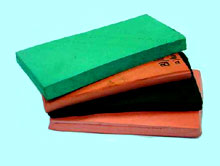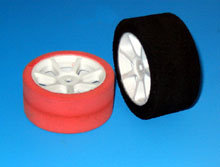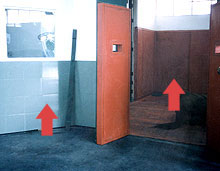When rubber compound is added
with blowing agent, fine cell structure is formed on the vulcanisate
after curing, this rubber vulcanisate is called microcellular. The
cell structure of microcellular is normally closed with gas trap within
the cell. Since the blowing can be controlled the final products density
varies, the bigger the cell size the lower the density and the softer
the material. If the cell size is small the density is higher and
the harder the product. The properties of microcellular rubber is
normally inferior compared to solid vulcanisate, this is because the
cell initiates failure. Some of the properties deteriorated are tensile
properties, hardness, tear strength, abrasion and compression set.
The most preferable properties of microcellular are low density, lightweight,
high impact absorption and soft that assured comfort.
The application of microcellular rubber is very wide from toy to important
engineering applications. Some of the applications are sound absorption,
vibration isolation, insulation, padding, floor backing, wall lining,
footwear components cushioning and many others. For applications where
physical properties is critical and light weight is required then
low density is normally used and for applications where some engineering
requirements are needed then higher density is used. In footwear application
abrasion is important, the microcellular used is normally medium density
and of harder vulcanisates.
Since microcellular is a close cell it does not allow liquid to penetrate.
These advantages have been explored to be used in floatation applications.
Some of the applications are life jacket, buoyancy, fishing float
and many other applications as float. |
|

Microcellular samples

Toy tyres made of microcellular

Wall is padded with microcellular rubber to keep
horses comfortable
|




